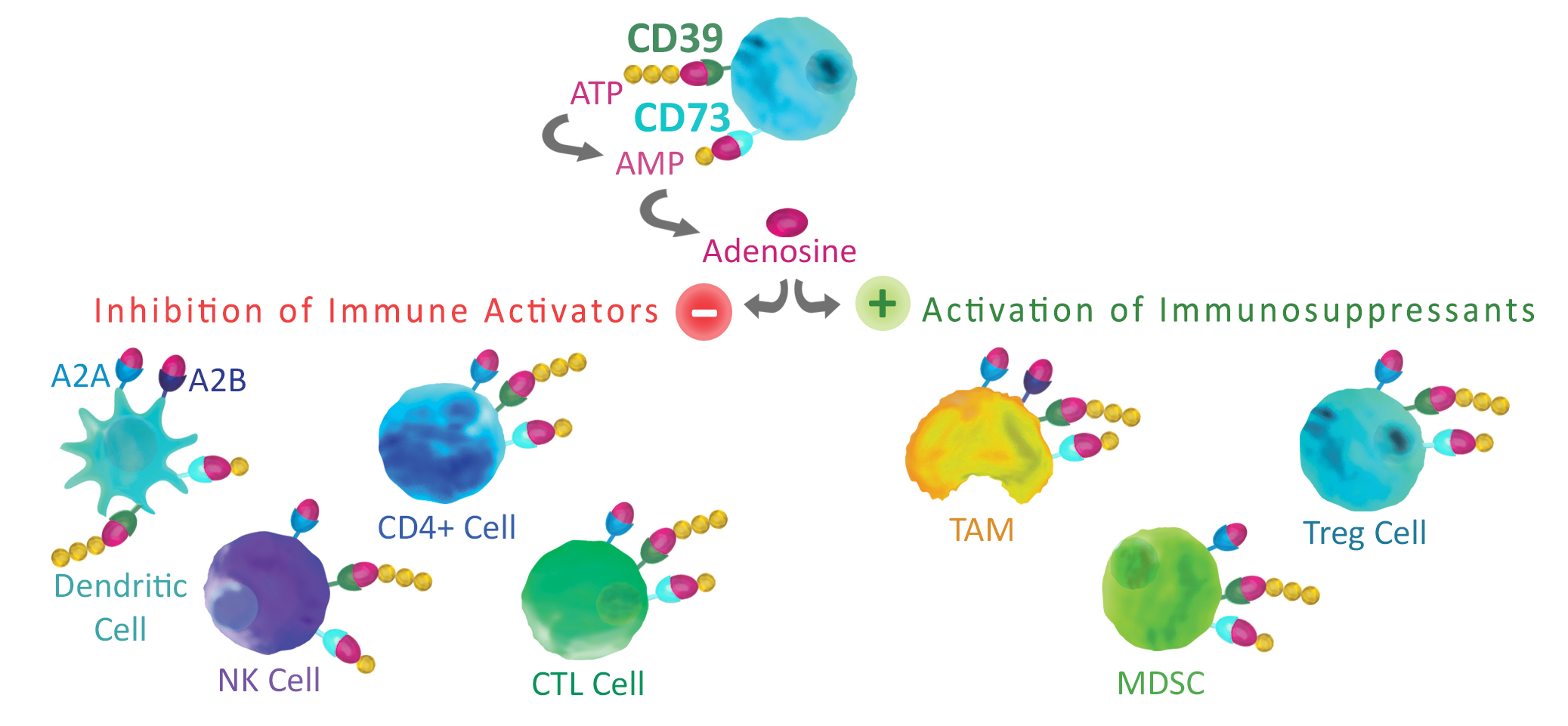CD73, Avi-His-Tag (Mouse) Recombinant
Recombinant mouse CD73 (5'-nucleotidase), encompassing amino acids 29-549. This construct contains a C-terminal Avi-His-tag (6xHis). This recombinant protein was affinity purified.
≥90
≥20 nmol/min/µg
CD73, or cluster of differentiation 73, is an enzyme which hydrolyzes AMP to adenosine. Increased concentrations of adenosine in the microenvironment has an immunosuppressive effect and promotes tumor cell growth.
Adenosine can enhance tumor growth via two mechanisms – 1) binding of adenosine to A2A and A2B receptors expressed on tumor cells directly promotes tumor cell proliferation and 2) binding of adenosine to A2A and A2B receptors on immune cells such as also inhibits the activity of pro-inflammatory, anti-tumor immune cells like CD4+ T Cells, CTLs, dendritic cells, NK cells, while and activating immunosuppressant cells like Tregs, MDSCs and TAMs.
Development of inhibitory antibodies and small molecules against CD73 could serve as a new therapeutic strategy in the treatment of cancer. In preclinical models have provided proof of concept for this hypothesis as Inhibition of CD73 in mouse models has resulted in anti-tumor effects, providing proof of concept for this hypothesis.




